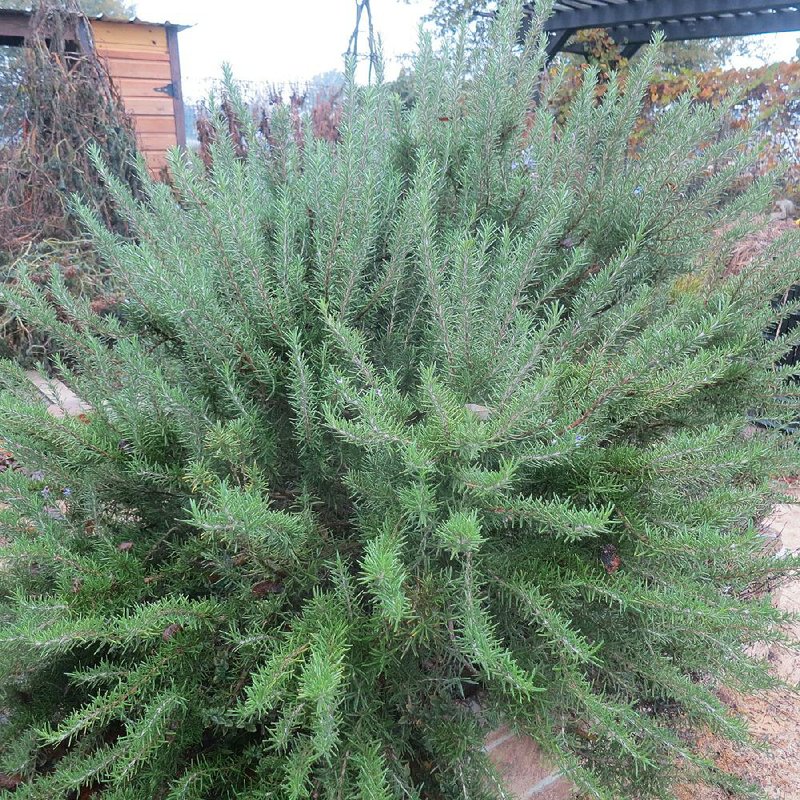THIS MONTH
• All of our plants have been through a killing frost, and cleanup is in order. Cut back spent perennials; pull out summer annuals and frozen vegetables. Mulch those plants that are moderately perennial with an extra layer of mulch for added winter protection.
• Many gardeners in central Arkansas had lantana or banana plants that failed to make it through last winter. Adding extra leaves or other mulch for the remainder of the winter, and then raking that away in the spring, could help.
• Raking is definitely needed in most yards. Leaves were falling before the recent freeze and have multiplied since. A heavy layer of whole leaves left on your lawn all winter can damage the lawn. Rake them and, if possible, shred them and add them to the compost pile, or use the shredded leaves as mulch in the garden.
• If you have planted winter annuals, don't forget to fertilize and water on warm days. If we get ample moisture, water isn't critical, but check moisture levels before a hard freeze. Established shrubs and trees should be fine unless it gets really dry, but newly planted trees and shrubs, as well as winter vegetables and annuals, don't have elaborate root systems; they need moisture to buffer them from low temperatures. Pansies in particular are also heavy feeders and will bloom better when fertilized.
• When temperatures are really low, stay clear of your plants. Frozen plants are quite brittle and can be easily damaged.
• Frozen plants will often look half-dead, but once they defrost, they typically resume blooming unless it stays below freezing for extended periods. Even last winter after a lot of ice damage,
if they survived, most winter annuals perked back up in late winter and gave us color through spring.
• There is still time to plant spring-blooming bulbs, but if you don't have time to plant, at least store the bulbs where they will be exposed to lower temperatures. Don't let the bulbs freeze but temperatures of below 55 degrees are required for healthy growth and bloom in the spring. Plant them as soon as you can or no later than mid-January.
• Holiday plants are available everywhere. If you receive or buy a poinsettia, to keep it colorful, give it bright light and even moisture. Don't over- or underwater it. With just a little care it will keep its color for months. Holiday cactus plants are also available and can rebloom annually with minimal care.
• Other plants that can add easy color include amaryllis bulbs, paper white narcissus, bromeliads and cyclamen. Norfolk Island pines are often used as miniature Christmas trees.
PLANT OF THE MONTH
Rosemary plants are excellent evergreen herbs now being used as edible ornamental shrubs. Last winter did some damage to the outdoor shrubs, but most of the rosemary I saw rebounded and is nice and healthy now.
Rosemary has lovely small purple blooms in winter through early spring. The herb thrives in poor, rocky soil -- which many of us have.
There are upright and prostrate forms. They are commonly found for sale sheared into Christmas trees, candy canes or other holiday shapes. They do not thrive indoors, often dying within a few weeks, so replant them in a larger container and move them outside or put them directly in the ground.
If you want to keep these holiday-shape rosemary plants in the small pots they came in, protect them from any temperatures below 20 degrees. Those small containers don't shelter the roots very well. Move the pots into a garage when it is really cold.
If you want to use them for a party decoration, shaped rosemary can stay inside for a day or two but the heated house, coupled with no humidity and usually too much water, is often fatal for these plants.
If you grow rosemary, you know you can use it year-round in your cooking but prune judiciously, especially now when growth is low. If you should see winter damage, leave it on the plant until spring arrives. The dead parts will serve as a buffer to help protect the rest of the plant.
Janet B. Carson is a horticulture specialist for the University of Arkansas Cooperative Extension Service.
HomeStyle on 12/06/2014

